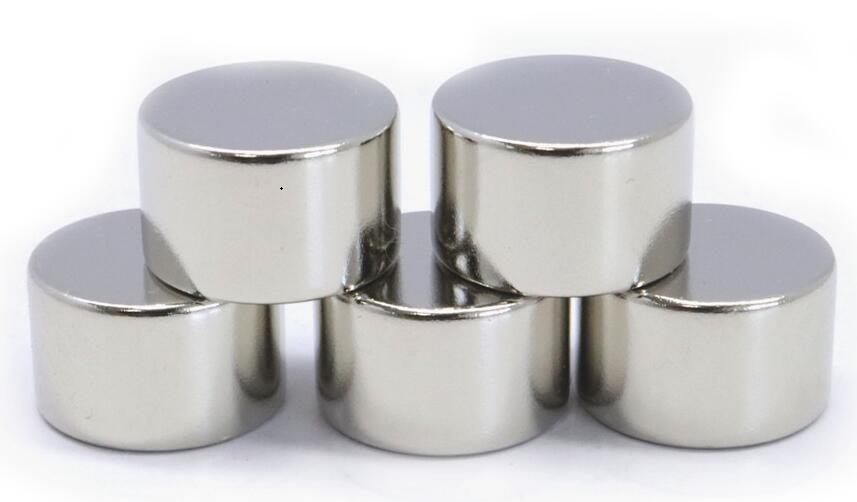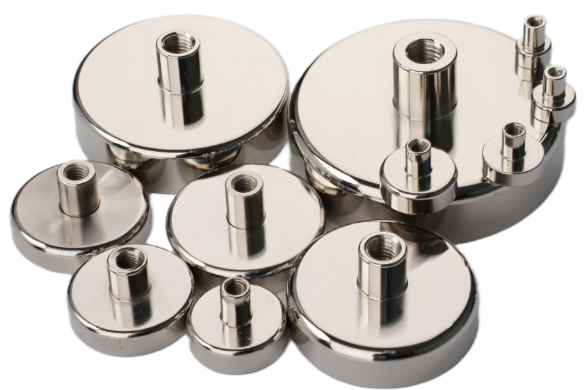Surface Treatment of NdFeB Magnets – Passivation
To improve the corrosion resistance of NdFeB magnets, it is usually necessary to treat the surface of NdFeB magnets. Common surface treatment methods for NdFeB magnets include phosphating, electroplating, electrophoresis, and vapor deposition. In our last article, we introduced electrophoresis, so in this article, we will introduce another method of surface treatment of NdFeB magnets – passivation.
 Surface Treatment of NdFeB Magnets – Passivation
Surface Treatment of NdFeB Magnets – Passivation
The passivation of neodymium magnets is to form a protective film on the surface of the neodymium magnets through chemical methods to achieve the purpose of corrosion protection.
The NdFeB magnet passivation process generally includes: degreasing → water washing → ultrasonic water washing → pickling → water washing → ultrasonic water washing → pure water washing → passivation treatment → pure water washing → dehydration → drying.
1. Degreasing
Degreasing can only remove grease, dust, sweat, and attached metal chips on the surface of the NdFeB magnet, but not the rust on the magnet. The oil stain on the surface of the NdFeB magnet is brought from the processing of the material, such as the anti-rust grease used to prevent rust during storage and transportation.
NdFeB magnets must be cleaned of oil on the surface before further surface treatment. Due to the wide range of sources and types of oil pollution, the degree of pollution varies greatly, so the problem of degreasing is very complicated. In order not to cause corrosion and subsequent residues during the degreasing process, try to use a degreasing agent with low free alkalinity and total alkalinity.
2. Pickling
The purpose of pickling is to remove the black ash and rust left on the surface of NdFeB magnets. The pickling liquid generally uses 2%~4% nitric acid, and the time is 0.5~2.0 min. High acid concentration and long pickling time are both detrimental to the magnet.
3. Passivation Treatment
The passivation treatment method is to place the magnet in a container containing passivation liquid and soak it for a period to achieve passivation, that is, to form a passivation film on its surface. As an important surface anti-corrosion treatment, passivation is commonly used in many metals, especially metals such as aluminum, zinc, cadmium, tin, and magnesium, and their alloy materials.
Most of the traditional passivation treatments use chromic acid and chromate as treatment agents, called chromate passivation. The chromate conversion film formed on the metal surface after treatment has a good corrosion protection effect on the base metal.
In recent years, the corrosion resistance requirements for NdFeB conversion films have become higher and higher, and passivation technology alone has made it difficult to meet the requirements. The commonly used process is to use composite conversion film technology, that is, first phosphating and then passivating, by filling the pores of the phosphating film, the corrosion resistance of the composite conversion film is effectively improved.
Conclusion
Thank you for reading our article and we hope it can help you to have a better understanding of the surface treatment of NdFeB magnets – passivation. If you want to know more about NdFeB magnets, we would like to advise you to visit Stanford Magnets for more information.
Stanford Magnets is a leading magnet supplier across the world, that has been involved in R&D, manufacturing, and sales of magnets since the 1990s. It provides customers with high-quality permanent magnets like neodymium magnets, SmCo magnets, AlNiCo magnets, and ferrite magnets at a very competitive price.















